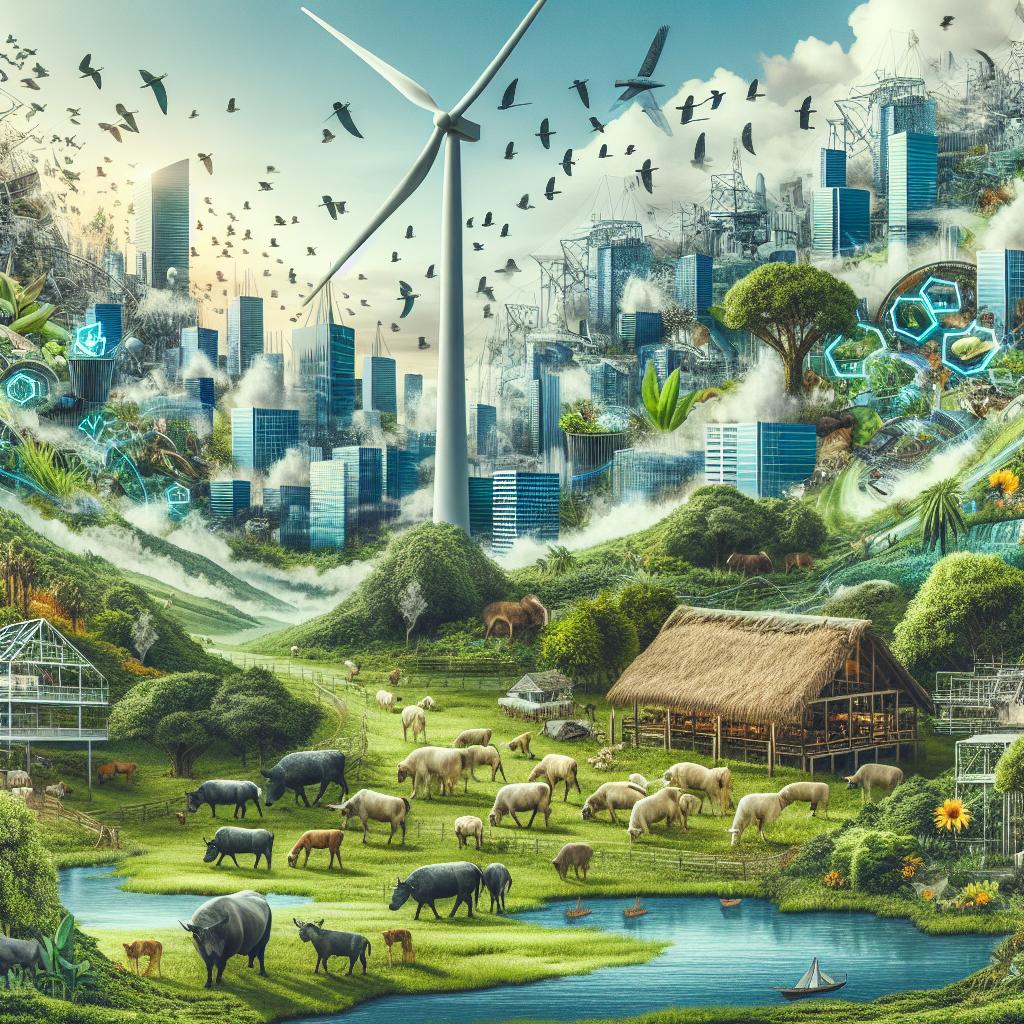Protecting Our Planet

As the world becomes increasingly aware of the pressing environmental challenges we face, from climate change to air pollution, more and more companies and organizations are stepping up to the plate to make a difference. In this article, we'll explore how wildlife protection, renewable energy, sustainable agriculture, green buildings, corporate social responsibility, and air quality are all interconnected and how they're working together to create a greener, more sustainable future.
First and foremost, let's talk about wildlife protection. Our planet is home to an incredible array of diverse and beautiful creatures, many of which are facing extinction due to human activities like deforestation, poaching, and pollution. Renewable energy, in particular, is playing a crucial role in reducing the carbon footprint of industries and reducing the demand for fossil fuels, which contribute significantly to greenhouse gas emissions and the destruction of habitats. Solar and wind energy, for example, require little to no water and emit no greenhouse gases during operation, making them a sustainable alternative to traditional energy sources.
But what about the food we eat? Sustainable agriculture is another important piece of the puzzle. By using farming practices that minimize the use of pesticides and other harmful chemicals, reduce water consumption, and promote biodiversity, we can help protect wildlife habitats and ensure that our food supply is both sustainable and healthy. Renewable energy can also play a role here, as many farmers are turning to solar and wind power to power their irrigation systems and other operations.
Speaking of buildings, did you know that they are responsible for a significant portion of global greenhouse gas emissions? Enter green buildings, which are designed and constructed in a way that reduces their carbon footprint and minimizes their impact on the environment. Renewable energy is a key component of green buildings, as solar panels and wind turbines can be installed on rooftops or nearby to provide power. Sustainable agriculture and wildlife protection are also important considerations in the design and development of green buildings, as they can help ensure that the buildings are located in areas that are not disruptive to local ecosystems and that the materials used in construction are sourced sustainably.
Corporate social responsibility (CSR) is another crucial piece of the puzzle. CSR refers to a company's commitment to making a positive impact on society and the environment, beyond just what is required by law. This can include initiatives related to wildlife protection, renewable energy, sustainable agriculture, and green buildings. For example, a company might invest in renewable energy projects, implement sustainable farming practices in their supply chain, or construct green buildings for their operations. By taking a holistic approach to sustainability, companies can reduce their environmental footprint, improve their reputation, and create long-term value for their stakeholders.
Finally, let's not forget about air quality. Clean air is essential for both human health and the health of the planet. Renewable energy, sustainable agriculture, and green buildings all play a role in improving air quality. Renewable energy sources like wind and solar generate electricity without emitting pollutants, while sustainable farming practices can help reduce the use of harmful fertilizers and pesticides that contribute to air pollution. Green buildings, meanwhile, can be designed to minimize the use of energy and materials that contribute to air pollution, as well as incorporate features like green roofs and natural ventilation to improve indoor air quality.
In conclusion, wildlife protection, renewable energy, sustainable agriculture, green buildings, and corporate social responsibility are all interconnected and crucial components of creating a greener, more sustainable future. By working together, these initiatives can help reduce greenhouse gas emissions, protect wildlife habitats, improve air quality, and promote sustainable practices across industries and sectors. Let us all remember that it is our collective responsibility to protect our planet and ensure a healthy, livable future for generations to come.




